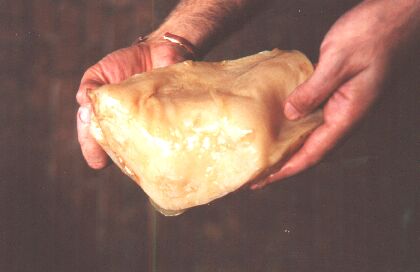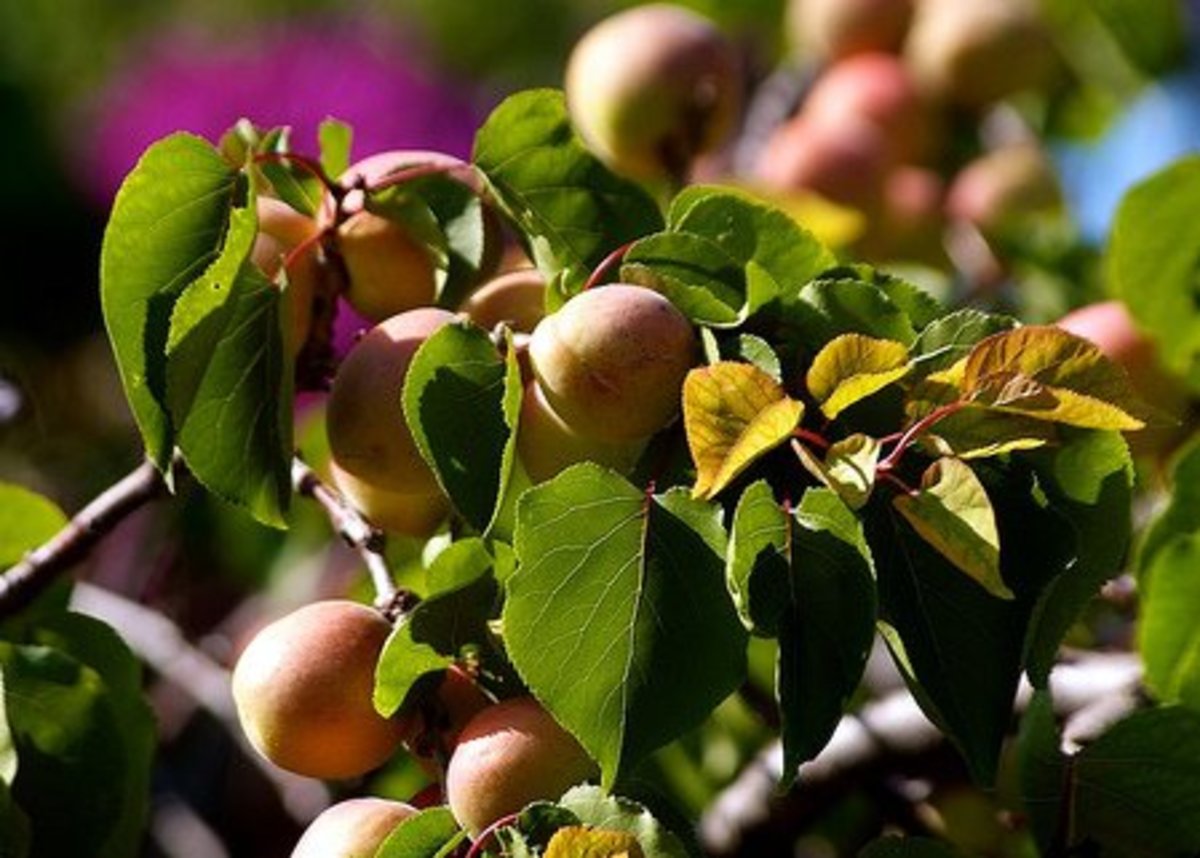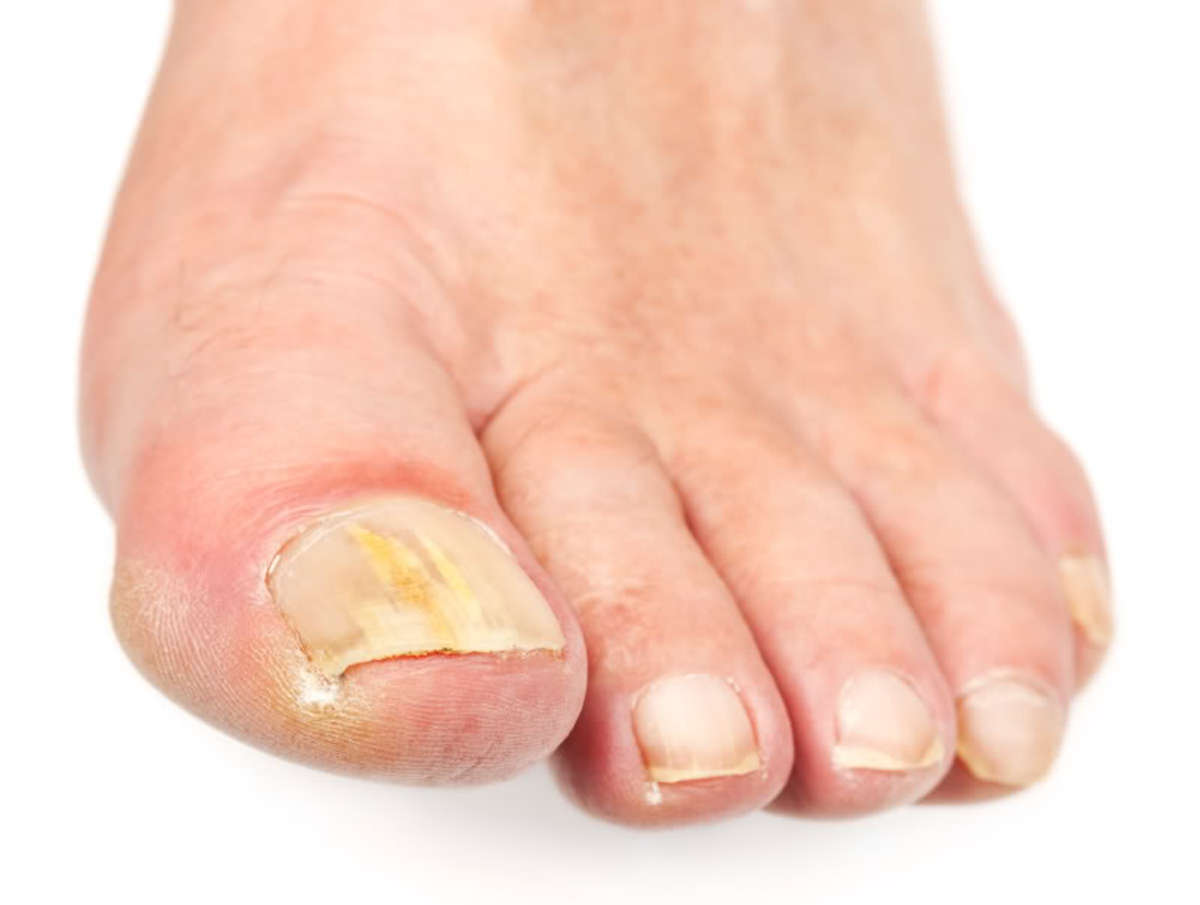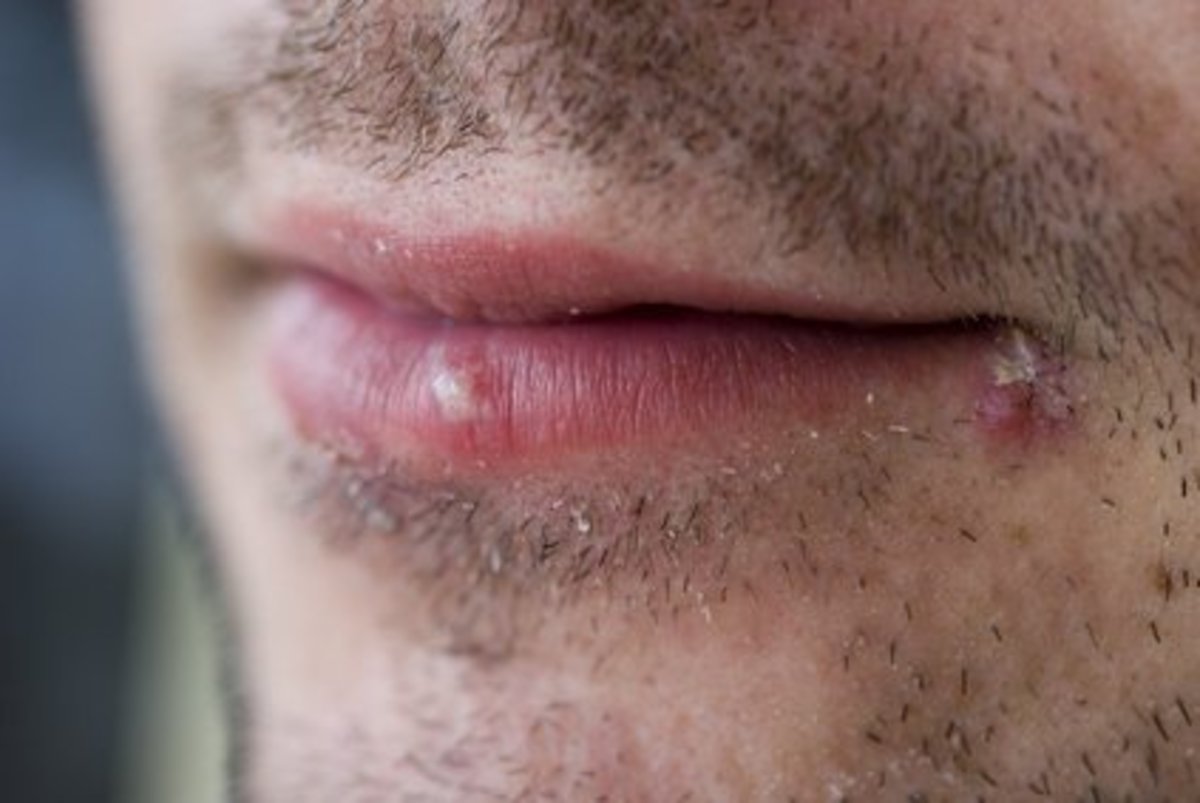Kombucha miracle fungus - grow it in tea
All about Kombucha
Fancy a cuppa char? Make mine a Kombucha! These days, a lot of people are praying for a miracle. Well, one already is reported to exist in the form of Kombucha (pronounced kom-BOO-cha), the 'fungus' tea that is currently receiving the highest of praise in alternative health circles.
It's brownish, slimy and looks like something from a Sci-fi B-movie, an extraterrestrial invader maybe, and not at all appetising! But, be that as it may, the Kombucha fungus needs a bit of care and attention to do well. Once you've got it growing you usually end up with much more than you actually need and there's always plenty you can pass on to others.
A Kombucha scoby

Kombucha culture
A healthy Kombucha culture, when given fresh tea and sugar solution, will produce a layer of gradually thickening jelly on top of the original 'mother.' This is often referred to as the 'baby.'
The fungus culture feeds on the simple diet of sugar and tea and the general idea is to let it brew a nourishing elixir, which it does by fermenting the ingredients and turning them into health-giving nutrients.
Kargasok Tea and other names
Kombucha has many exotic-sounding names such as Kargasok Tea, Manchurian Mushroom tea, Fungus Japonicas, Fungojapon, Pichia fermentans, Combuchu, Tschambucco, Mo-gu, Cembuya orientalis, Kvass(Russia), Tea Kvas, Teakwass, Kwassan, Volga Spring, Russian Mother, Manchurian Elixir and Champignon de longue vie (France) but in scientific terms it is known as Medusomyces Gisevii Lindau.
It is not really a fungus at all, nor is it a lichen, which it has also been called. It is a symbiotic culture of many species of yeasts and bacteria all living together as a communal organism.
The main yeast is Schizosaccharomyces Pombe, which is certainly a bit of a mouthful and most of its common names are a lot easier! It's first recorded use was in the Chinese Tsin dynasty back in 212 BC but how all these bacteria and yeasts originally came together no one seems to know. Whatever the case may be, the history of its use in many parts of the world is very extensive and impressive indeed.
It was known as 'The Divine Tsche' or 'The Remedy for Immortality,' and in 414 BC a 'Dr. Kombu' is reported to have brought it into Japan to present as a treatment for the ailing Emperor Inkyo.
From there, it was spread by traders and travellers, via Russia and India, to many other parts of the world along the trading routes. Many years later it re-surfaced once again in Japan between the Wars when a Japanese visitor to the Russian area of Kargasok discovered very many incredibly healthy and youthful people there even though many of them were over a hundred years old. The visitor was told that the Kargasoks drank an elixir on a daily basis, which gave them their good health and kept them younger than their years.
A culture of Kombucha was given to this visitor, who, naturally impressed took it back home to Japan where friends who received it were soon to report great benefits too. Its use became widespread and it was a regular beverage consumed by the Samurai warriors of the oriental land.
Harold Tietze's book
The benefits to users are so many that an entire book could easily be devoted to detailing them all and, indeed, many books and web-sites on the Internet already exist on the subject. Probably the best-known book about it is 'Kombucha- Miracle Fungus' by Harold Tietze and published by Gateway Books of Bath.
It has been reported to be a remedy for migraine, skin diseases, allergies, anxiety, insomnia, bowel problems, impotence, respiratory disorders such as bronchitis, emphysema and asthma, kidney and bladder problems, gout and arthritis, impotence, constipation, menstrual and menopausal problems, cataracts and floaters in the eye and aids weight loss by regulating the appetite. The fungus is reported to have reduced alcoholic cravings for drink and also to have lessened the effects of hangovers. Kombucha has helped in cases of severe illness too including AIDS, ME, MS and cancer.
President Reagan
President Reagan, apparently, was said to have drunk it daily in the high dosage of 1 litre a day, when he had been diagnosed with cancer and it is reported that it enabled him to finish his term in office.
American doctors remembered that Alexander Solzenhitzyn, who was living in the USA at the time, had described Kombucha as the cure used for cancer when at the Soviet labour camps. Solzenhitsyn was interviewed about it and a culture was obtained from Japan and flown to America.
Kombucha is also known to have cured alopecia, eliminated grey hair and reduced baldness, although I cannot say that it has made much difference to my own follicular challenge!
B-vitamins
The health-giving powers of the fungus are attributed to the range of organic acids and B-vitamins that it produces in the fermented brew. When correctly brewed for an adequate length of time and thoroughly fermented it contains in varying amounts the following nutrients: Vitamins C, B1, B2, B3, B6, B12, and B15, Acetic acid, Folic acid, Gluconic acid, Glucoronic acid, Usnic acid, Lactic acid and several beneficial enzymes and essential amino acids. It helps boost the body's immune system and brings about a general purification and detoxification process. The Vitamin C assists healing and is an anti-oxidant and the B Vitamins are used in carbohydrate conversion by the body as well as being needed by the nervous system.
Gluconic acid is a food preservative and aids the breakdown of glucose. Glucoronic acid is needed to bind toxins that can then be expelled and Usnic acid is reported to have anti-viral and anti-bacterial properties.
There is also the theory that Kombucha somehow seeks out and targets the areas of an individual body that needs the most attention and remedies them first. Some people have the rather attractive notion that it is a gift from the Mother Earth for us, her children, in these times of great pollution.
It should, however, be noted that it could have a few side-effects as well as all its beneficial properties. The tea can contain too much lactic acid, which consumed over a long period may lead to joint pains, dizziness and sinus problems.
However, that being said, it is also reported that cancer patients have too little L-Lactic acid (+) in their connective tissues and Gunter Frank states that 'So long as it (L-Lactic acid +) is predominantly present in tissue, cancer cannot develop. When there is a deficiency, the cellular respiration starts to fail and this leads to a build up of DL-Lactic acid (-) in the tissues. Kombucha can be regarded as uniquely able to re-balance the blood pH and, in so doing, prevent disease conditions from occurring.
If too much is drunk and detoxification is started too soon then headaches, fatigue, skin rashes and digestive disorders can result. It is very important to work up slowly, increasing the daily intake from a small 60ml glass to a greater volume, three such glasses spread over the day, for example.
Some people find that it works well if they take a break from their Kombucha routine and may prefer three weeks on and a break of a week off, before resuming their normal intake. It is also advisable to drink plenty of water to aid the ongoing purification and to counteract any unpleasant symptoms that might be experienced. The increased water will help flush out toxins from the system and is good for the body in any case.
Kombucha

Blood thinner
The tea has some blood-thinning properties if over consumed over a long time period so haemophiliacs should not drink it at all. Many Westerners drink more than is necessary and can run into problems stemming from its anti-coagulant effects, so, if you prick yourself and bleed far too freely then you are probably drinking too much Kombucha and need to cut it down. Fast free-flowing blood would not help much in an accident or if undergoing surgery!
Because the fermentation produces a small amount of alcohol- up to 1%- Kombucha is not drunk in Germany during pregnancy, although in Brazil it is recommended " to avoid poisons forming in the cells."
Due to its anti-coagulant effects it is best avoided in the first, second and third trimesters or seek advice from professionals. When breast-feeding it would be sensible to take only small quantities, if at all, to avoid colic in the infant. In the majority of cases though, no such problems are encountered and people start to feel the benefits after about a month of use, sometimes much sooner.
Sweeten to taste
Like ordinary tea or coffee it can be brewed to personal taste. Some like it strong, some like a weak brew and while many go for a sweet tea, others prefer their Kombucha dry. It really is a matter of the time it is left brewing and how much sugar was originally added. Different types of tea, of course, also produce different flavours.
The whole process leaves plenty of room for experimentation and the individual and personal touch. Some people like to try brewing Kombucha with mixes of black or green tea with some of the many herbal varieties.
It is worth remembering that volatile oils in herbs like sage, chamomile, mint, thyme and St. John's wort can adversely affect the brew and culture and should be used sparingly. There are many recipes and more being added all the time. One individual who has done a lot of pioneering research on Kombucha brewing recipes and set up a successful business from his work is Rob Lewis of Lewtress Millennium Kombucha Elixirs.
Rob, a specialist in natural medicines, gives his Kombucha a very long brewing time under the strictest of conditions and using the finest quality ingredients. So far, he has seven different elixirs available containing such things as Rose-hips, Japanese green tea, Echinacea herb and Elderflower.
Like I said, there is plenty of room for experimentation and further research on the subject. The longer the Kombucha is left to ferment the more acidic the brew becomes and if left too long it can often end up more like vinegar. When it is like this it can nevertheless be used to sprinkle on foods to give them that acidic tang many of us enjoy.
Christopher Hobbs, in his book, 'Kombucha, the Essential Guide,' states that 'Vinegar was mentioned in the writings of the Assyrians, Greeks and Romans as an important medicine in its own right.' However, most people like it best when it is slightly fizzy like a shandy or cider.
Kombucha links
- Kombucha Drinks - live cultures for maximum effect
Our range of Kombucha drinks are made exclusively by Lewtress - our cultures are live for maximum benefits - Kombucha - Wikipedia, the free encyclopedia
Wikipedia entry about kombucha
How to brew Kombucha
To make a brew of Kombucha you need a culture and some of its own liquid, water, tea bags (preferably Green Tea or Bancha), white sugar and a good sized china, glass or enamelled glazed terracotta pot, jar or dish with a wide mouth. Food grade acid-resistant plastic containers of material such as polypropylene have been used (and German commercially brewed Kombucha is made in such containers) but polyvinyls, polystyrenes and other cheap plastics can leak into the brew and cause a chemical reaction so are best avoided.
First of all measure to find out how much your container will hold in litres. Then pour water into a stainless steel pan, adding 6-7 tablespoons of sugar for each litre and bring to the boil. Turn it off and add tea bags at a rate of 1-2 per litre. Allow these to brew for about 10-15 minutes and then remove the tea bags. Next let it all cool down to luke-warm and pour it into your brewing vessel.
Add the culture and cover with an open-weave cloth, securing it with a rubber band or string to prevent insects or dust contamination. Leave it all at room temperature in a quiet and shaded spot to ferment for one to two weeks.
You should then be ready to remove the culture and bottle and sample your first batch of Kombucha tea.
If you can't wait that long and wish to have a look beforehand, you should find that after several days the culture has started to form a translucent skin across the surface and should have a few visible bubbles too. The skin is the new 'baby' and eventually this will form a thickened layer on top of the original 'mother.' It is possible to store these 'babies' in jars in a refrigerator for further use later on or for passing on to friends.
Sometimes a culture will die for no apparent reason or a layer of mould will develop on the surface. This is when spare cultures come in handy so you can start again. Often a mouldy culture can be saved by throwing the top layer away and rinsing the original 'mother' under running water. It's worth a try.
Various reasons have been put forward for mould and sudden death of cultures including tobacco smoke in the air. Personally, I cannot verify the stated reason as I know a woman who grows Kombucha well and she is a chain-smoker! The only times it has happened to me is when I have experimented with herbs containing volatile oils and in the winter. I feel that Kombucha likes a steady temperature and fluctuations may not do it much good.
There is an ever-growing network of people who cultivate and consume Kombucha and a piece is readily available by mail. Good luck with your brewing. Cheers!
Footnote: First published in Big Issue Cymru.
Copyright © 2012 Steve Andrews. All Rights Reserved.







